Introduction: Breathing Life into Urban Lakes
In the first part of this series, we explored the importance of lakes and the various restoration techniques that can bring these ecosystems back to life. Now, let’s shift our focus to a specific challenge: restoring lakes in highly urbanised and industrialised areas.
This post examines three unique lakes in Bangalore’s Electronic City—Shikaripalya Kere, Margondanahalli Kere, and Thirupalya Kere. Situated amidst rapidly expanding tech parks and industries, these lakes face complex challenges, from industrial pollutants to urban encroachments. Their restoration demands strategies as unique as the pressures they endure.
The objective here is to analyse the restoration approaches applied to these lakes and evaluate their effectiveness. By understanding the hurdles and solutions in these cases, we can gain insights into addressing similar issues in other urban water bodies. These lakes represent more than just water reservoirs—they are symbols of the ongoing battle to balance urban growth with ecological preservation.
Restoration in Action: A Unique Model for Urban Lakes
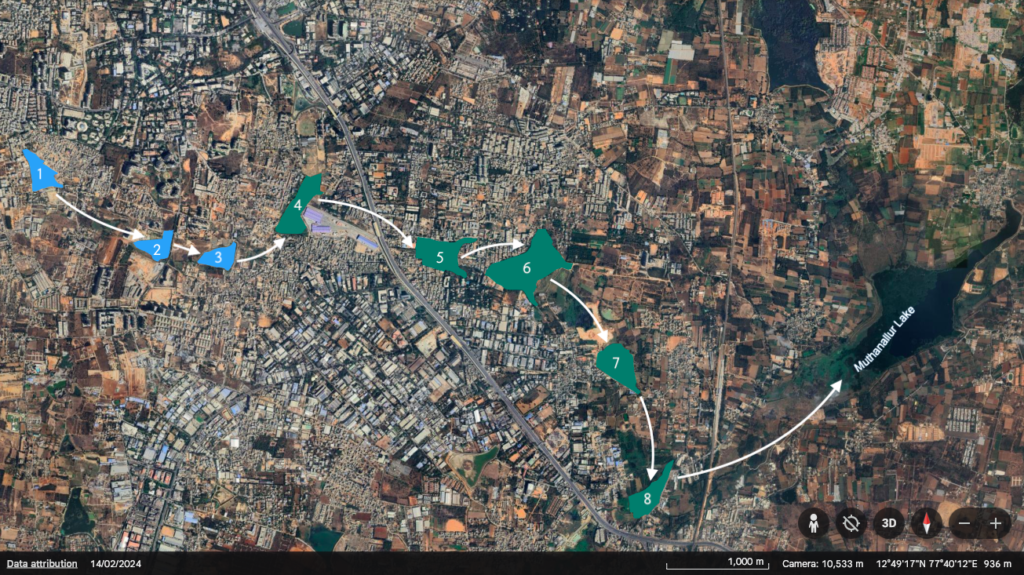
[Image source: Aditya Bhansali]
The lakes under study are part of a series that begins with Shikaripalya Kere on one side of Hosur Road and ends with Chandapura Kere on the other side. This entire lake series lies within the highly urbanized area of Electronic City, where most of the surrounding land is developed. The rural landscapes of Anekal Taluk, characterised by fields and open spaces, are visible only toward Chandapura Kere.
The restoration methods observed in these lakes employ an approach tailored to address the dual challenges of rainwater harvesting and sewage filtration. A central bund that is 25 – 30 ft is constructed within each lake, serving as a dedicated reservoir for rainwater, ensuring its levels are maintained naturally. Surrounding this bund, a series of interconnected lagoons with floating islands are created to treat incoming sewage. The effluent water flows sequentially through these lagoons, undergoing gradual filtration before being diverted via a canal to the next lake in the chain. The image below shows Margondanahalli kere with this restoration approach-
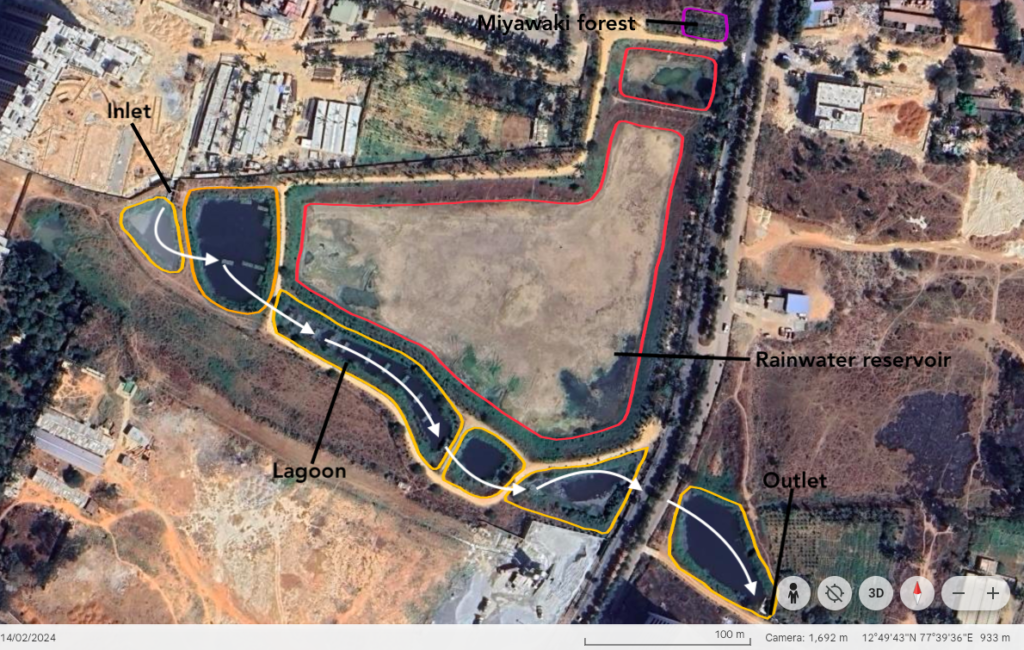
Field Observations: Lessons from Shikaripalya, Margondanahalli, and Thirupalya
To gain deeper insights, we conducted two field observations of Shikaripalya, Margondanahalli, and Thirupalya lakes, spaced roughly a month apart. These visits allowed us to assess the restoration work undertaken so far, document the current state of the lakes, and identify persistent issues that demand attention. Our observations underline the need for sustained intervention and maintenance to ensure these lakes can fulfil their ecological and community roles effectively.
The maps shown below are extracted from the EMPRI report, although the names may differ the lakes have been confirmed by the latitiude-longitude coordinates given for the same.
Shikaripalya Kere-
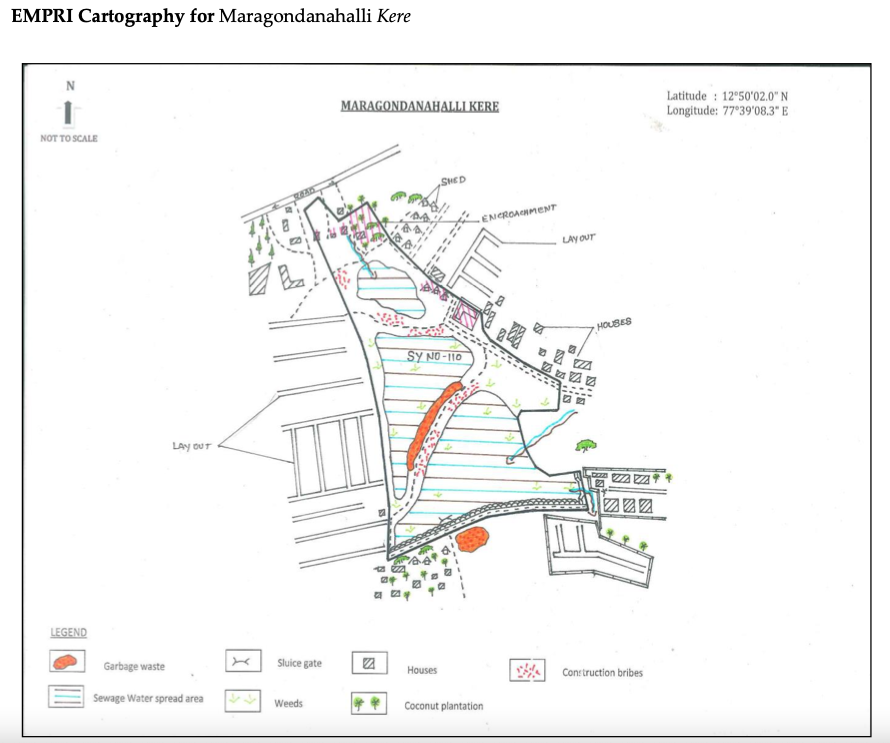
- Survey No. – 110
- Village– Margondanahalli
- Gram Panchayat- Hulimangala
- Hobli– Jigani
- Taluk– Anekal
- District– Bengaluru (Urban)
- Location – 12°49’59.9″N 77°39’08.6″E
- Date and time of Visit – September 2024 11:19am. November 2024 11:40am
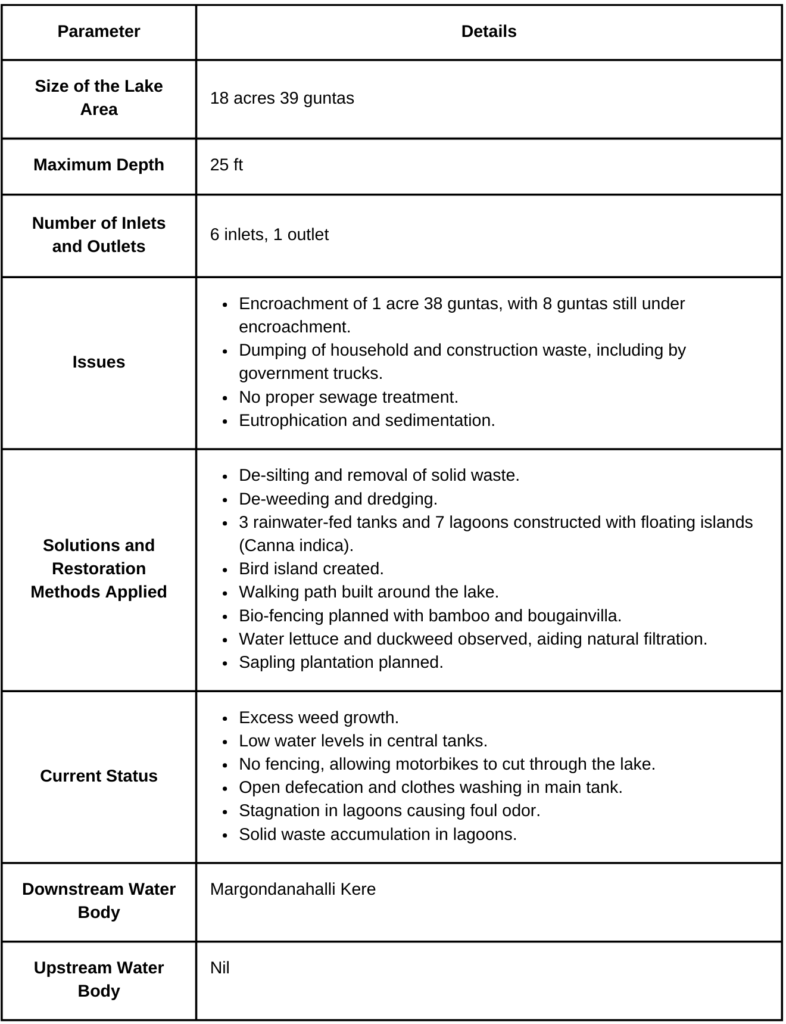


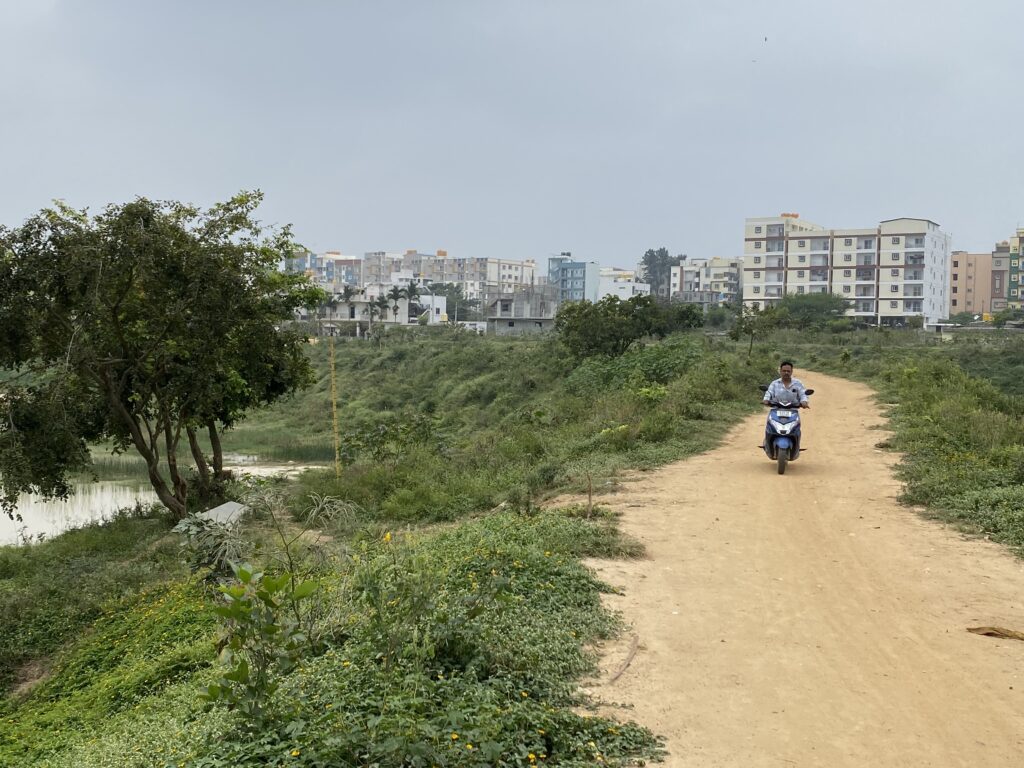
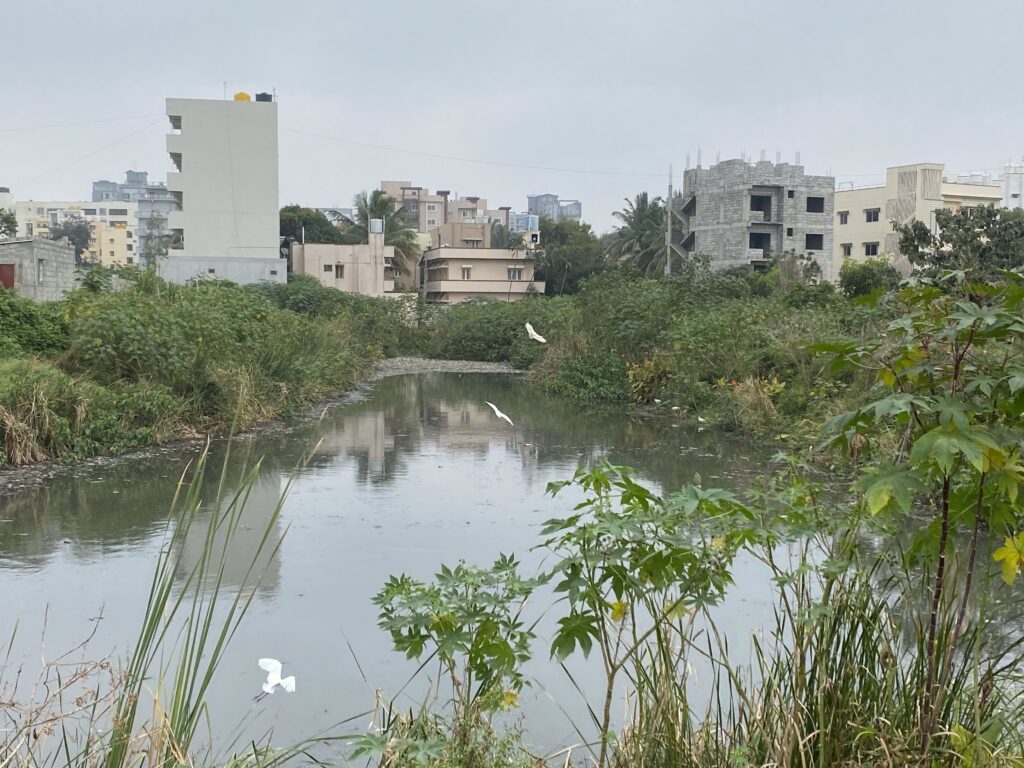
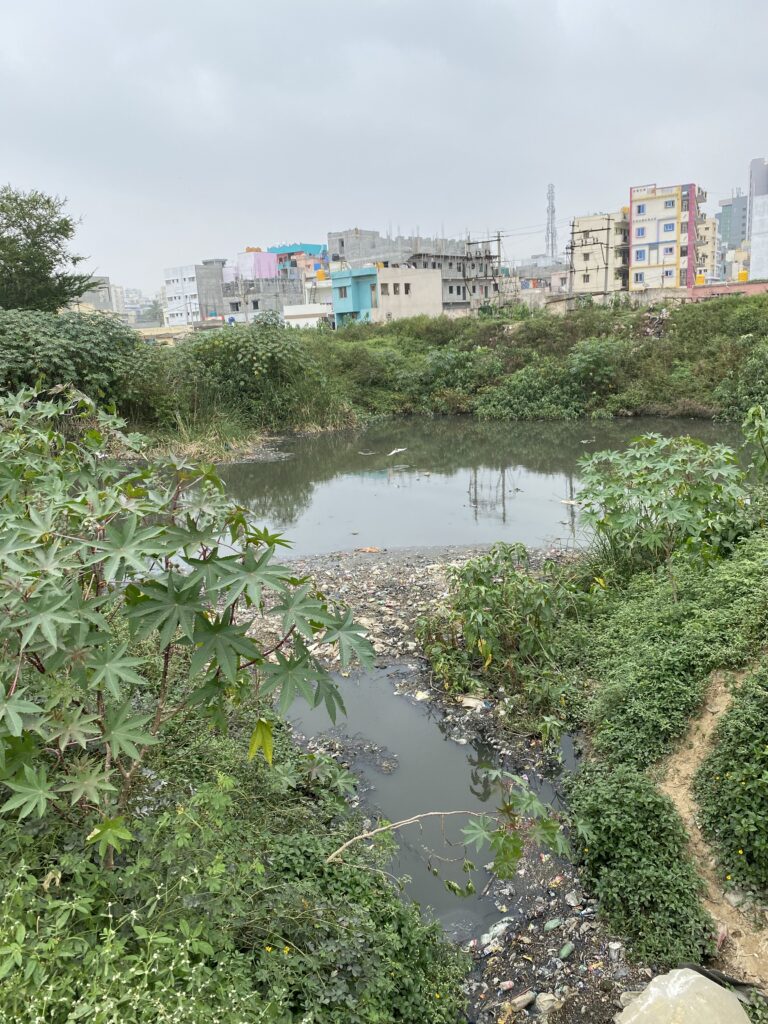
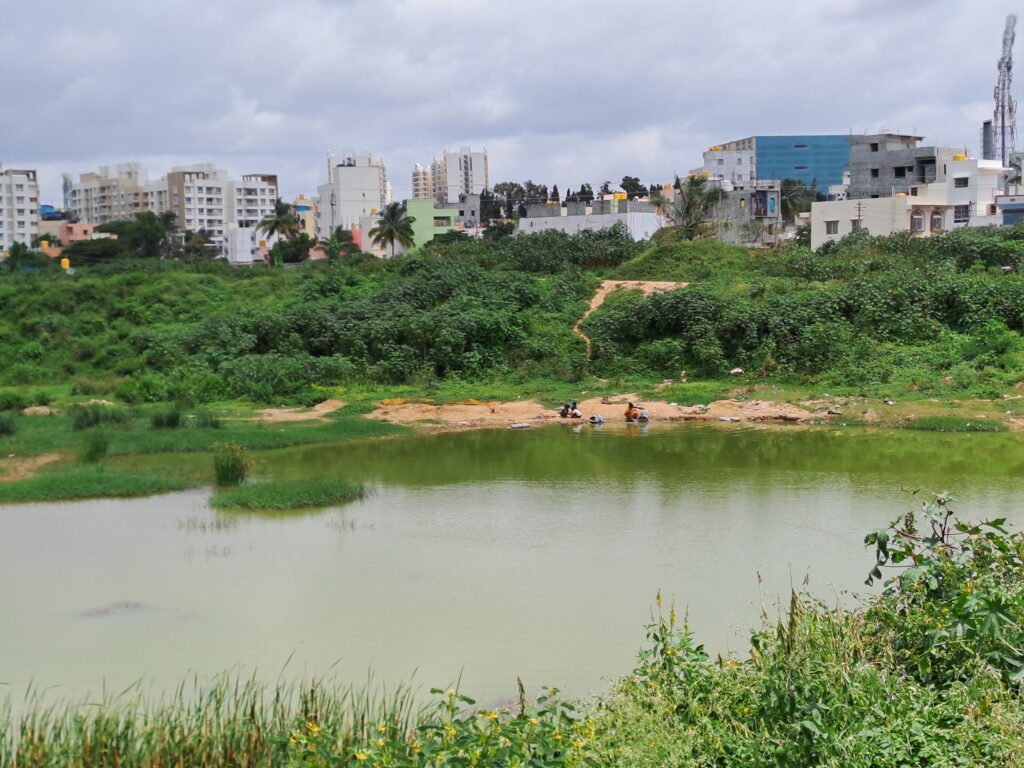
Margondanahalli kere-
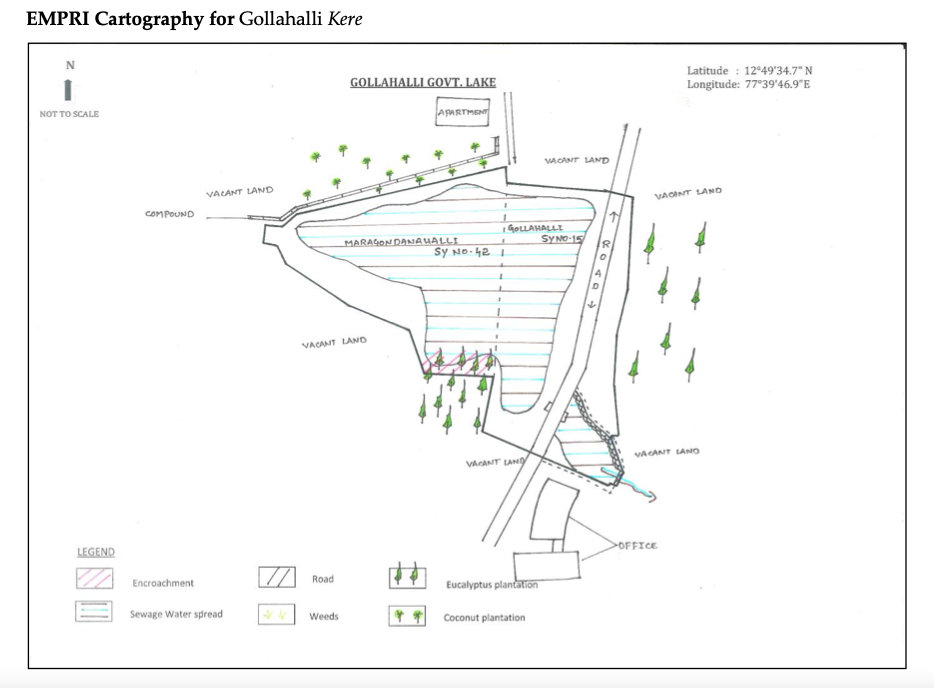
- Survey No.– 42
- Village– Margondanahalli
- Gram Panchayat– Hulimangala
- Hobli–
- Taluk– Anekal
- District– Bengaluru (Urban)
- Location – 12°49’38.6″N 77°39’44.6″E
- Date and time of visit– September 2024 12:45pm, November 2024 12:38pm
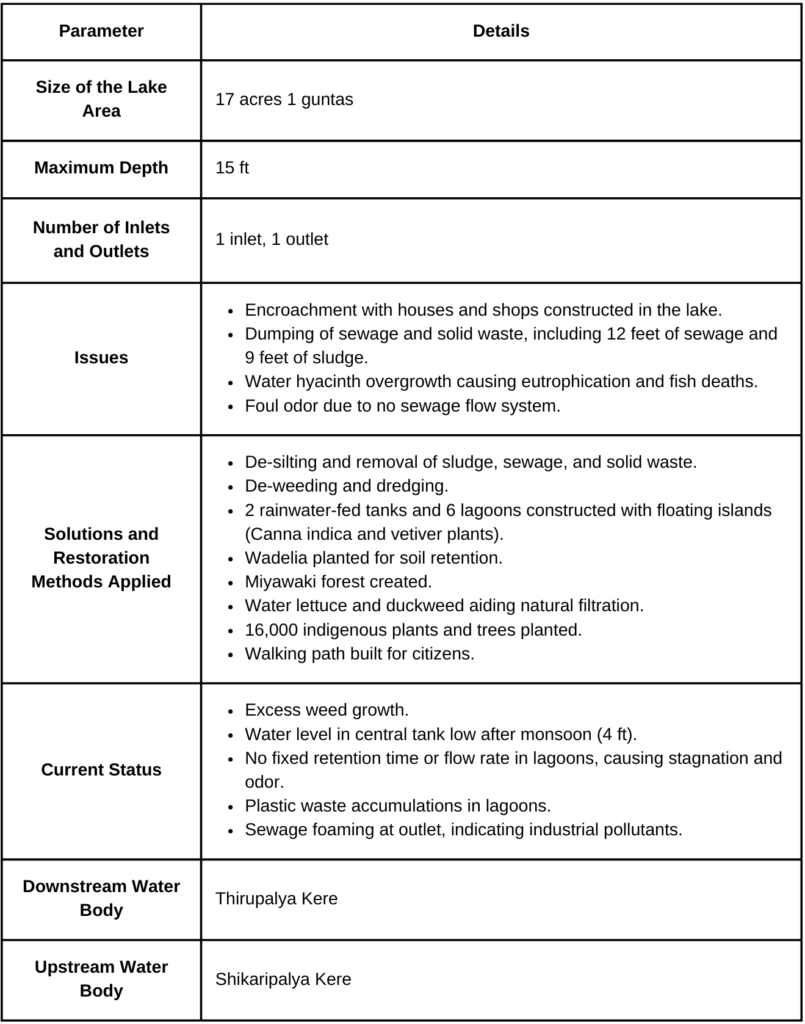
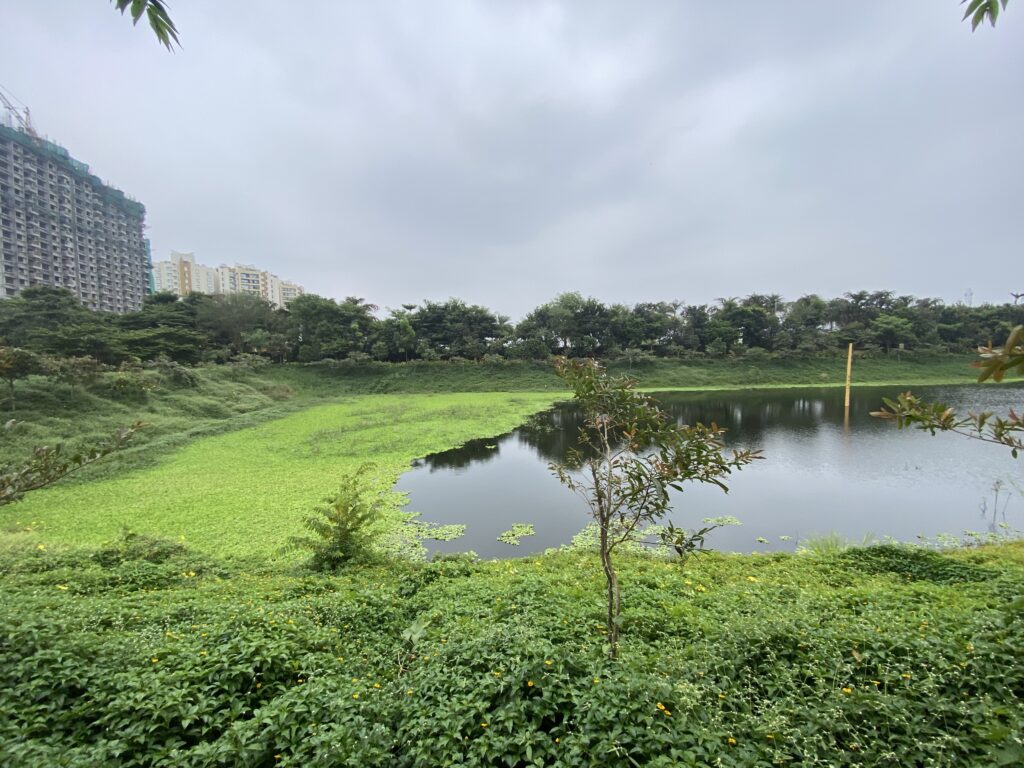
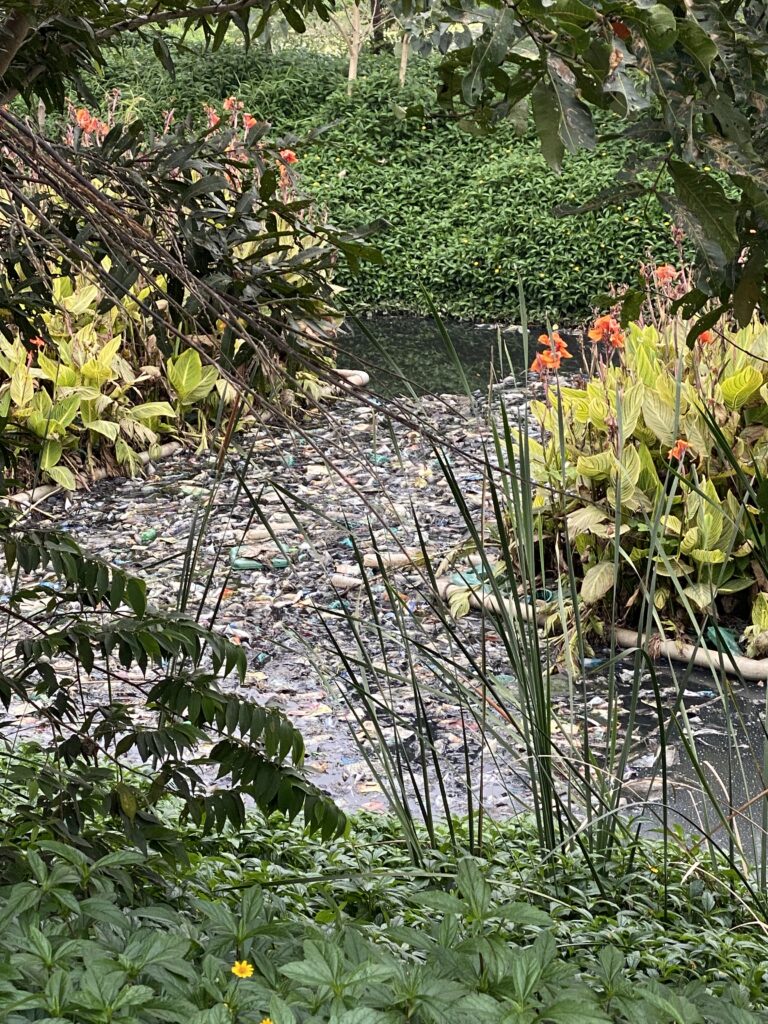
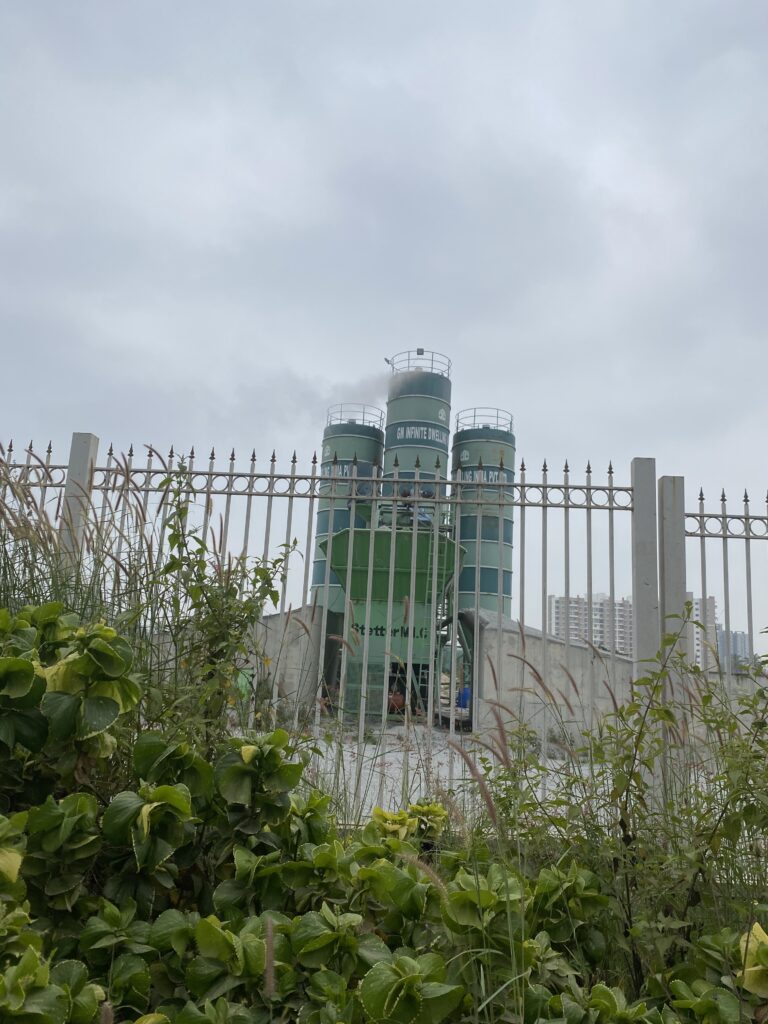
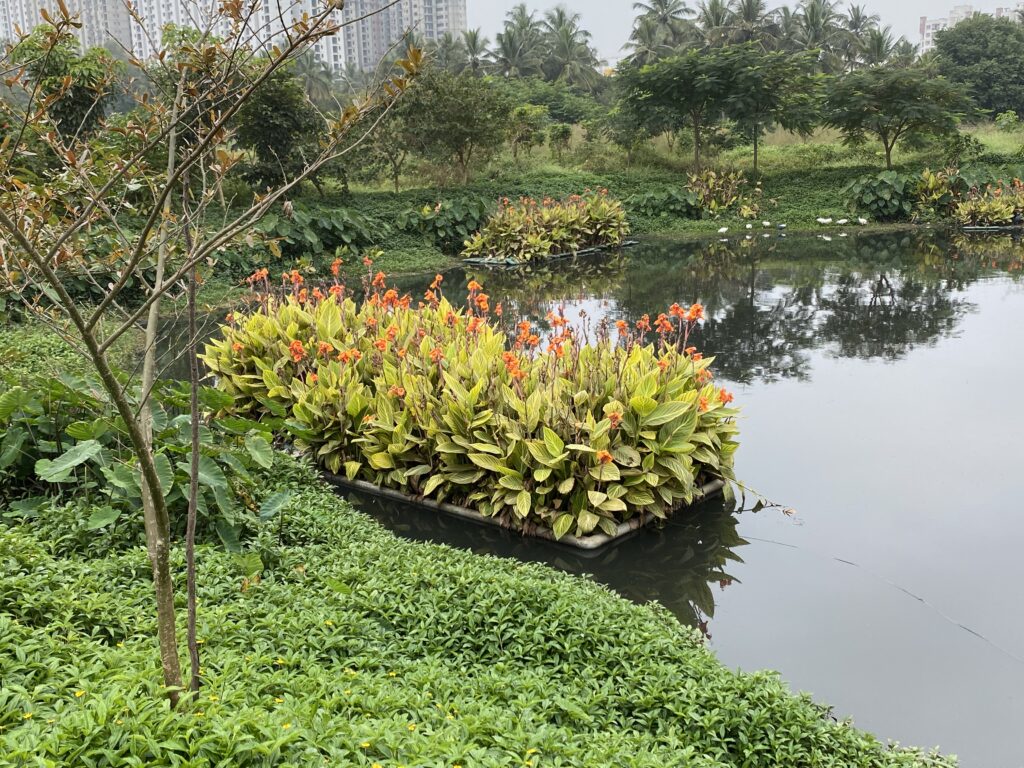
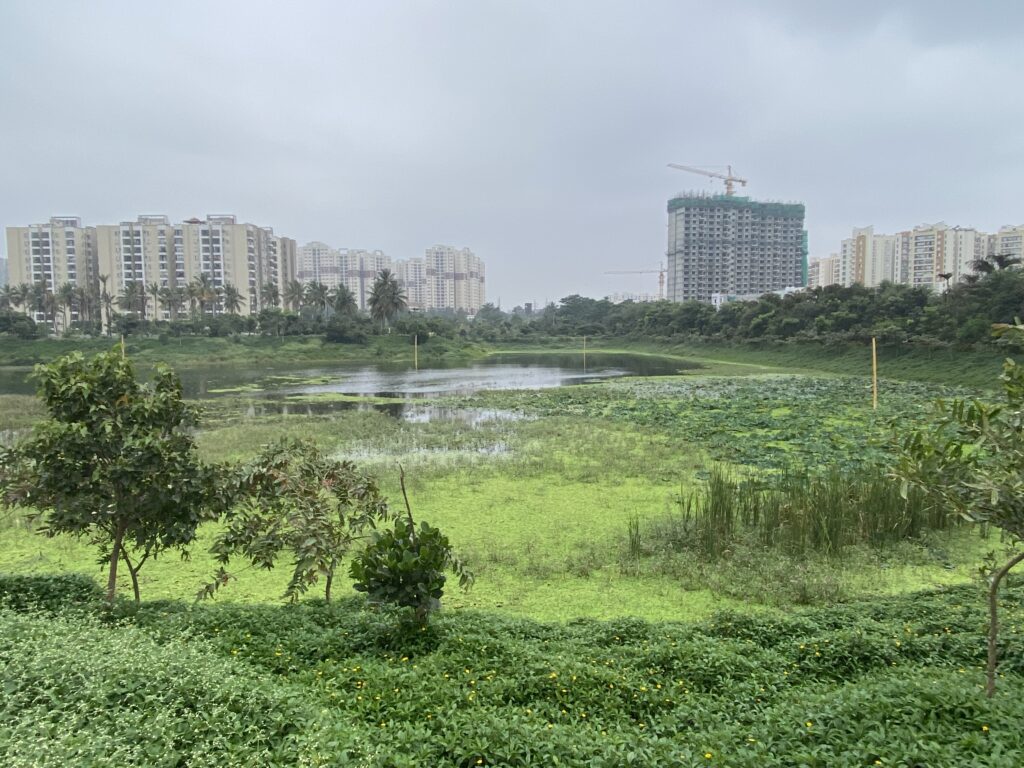
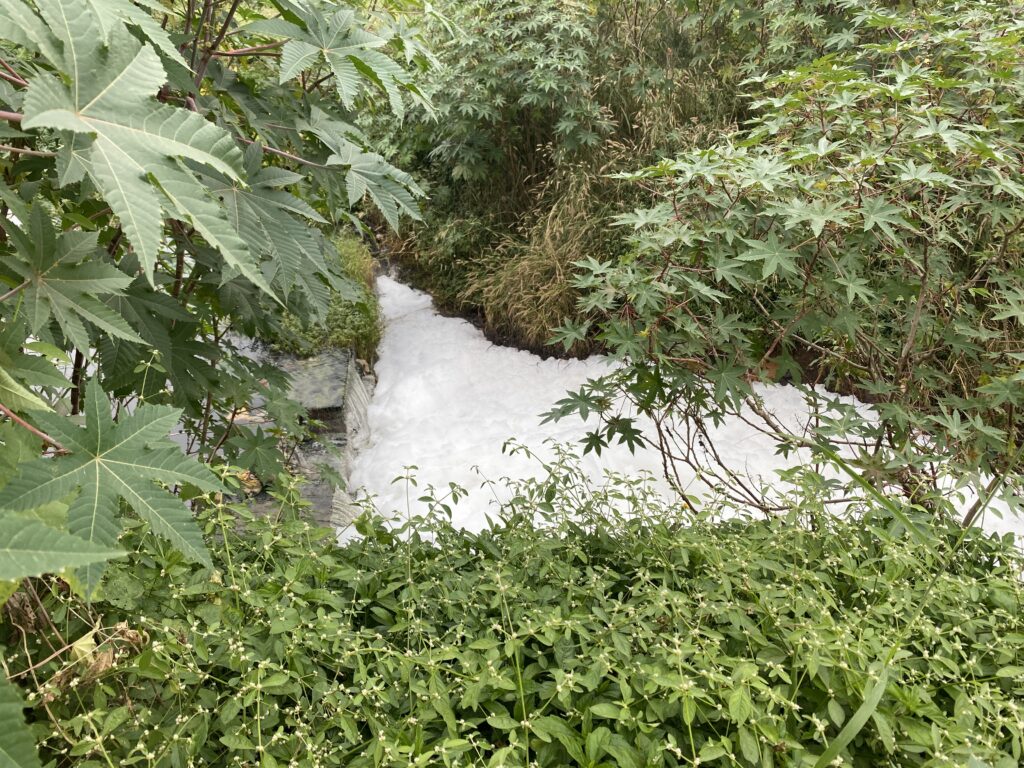
Thirupalya kere-
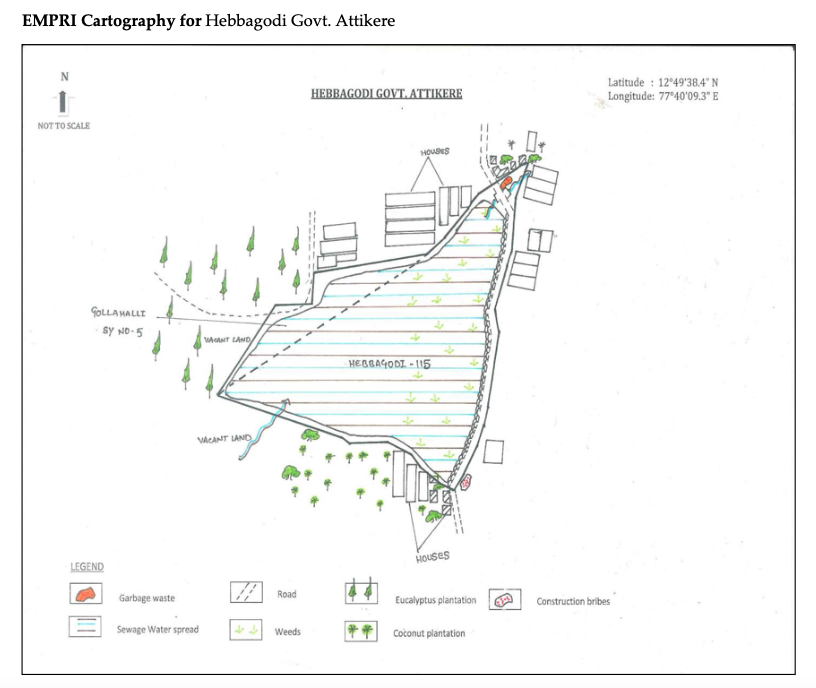
- Survey No. – 115
- Village– Hebbagodi
- Gram Panchayat–
- Hobli– Athibele
- Taluk– Anekal
- District– Bengaluru (Urban)
- Location – 12°49’35.2″N 77°40’03.5″E
- Date and time of visit– September 2024 2:05pm, November 2024 1:45pm
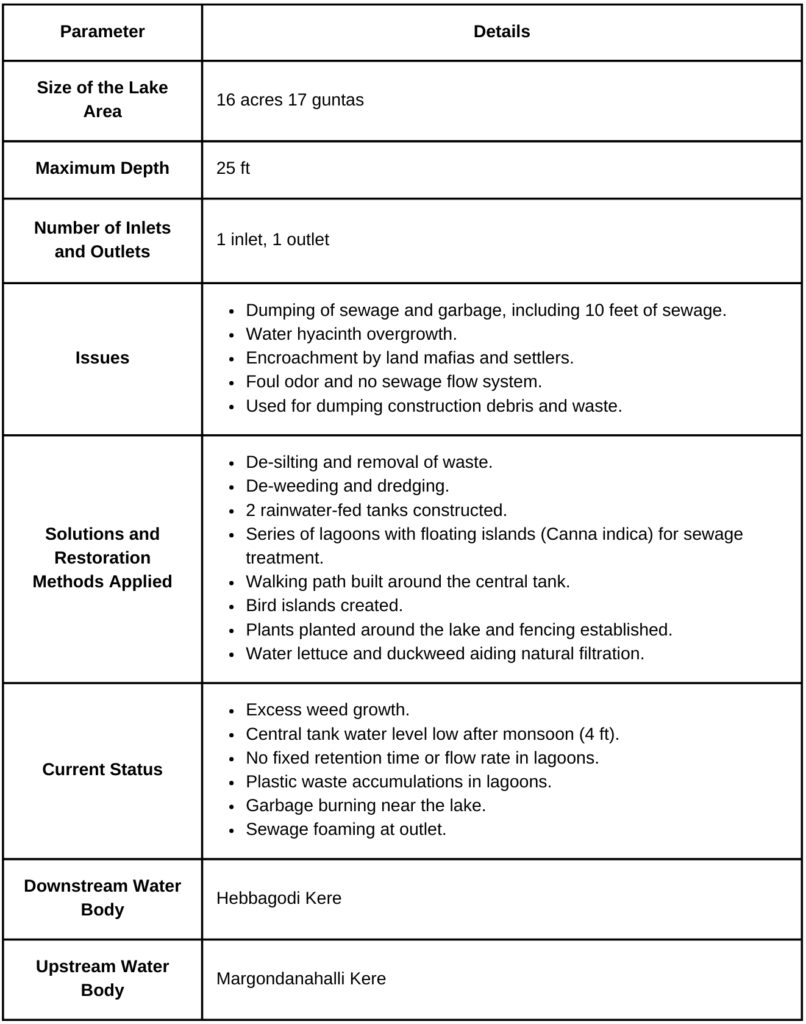
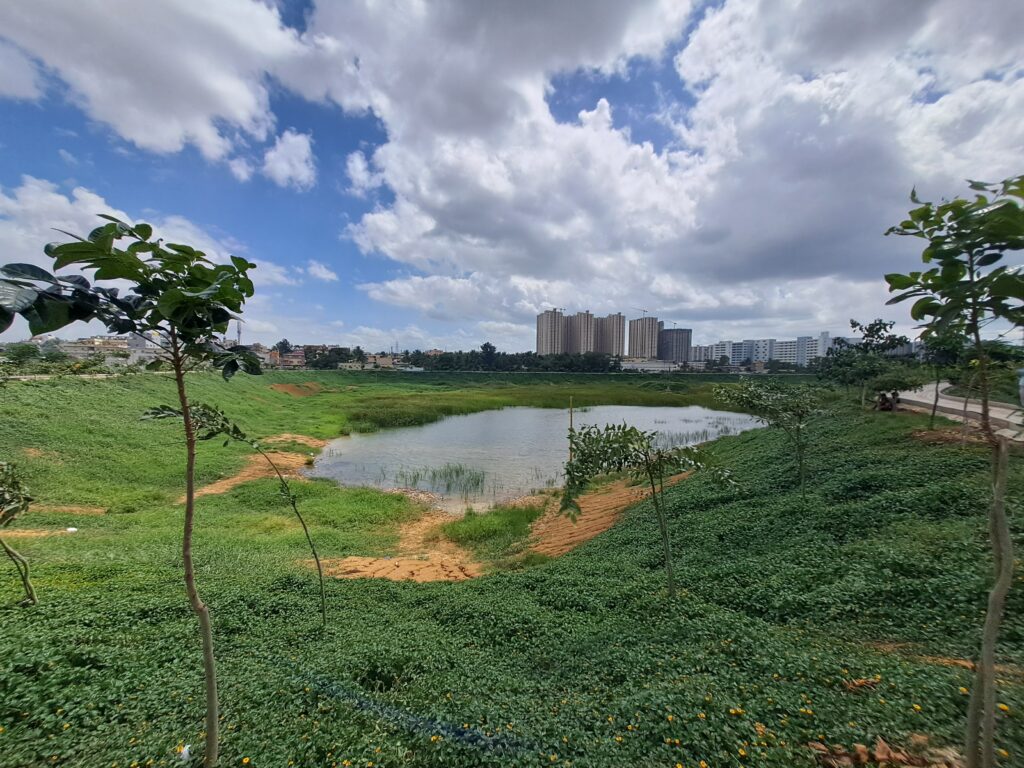
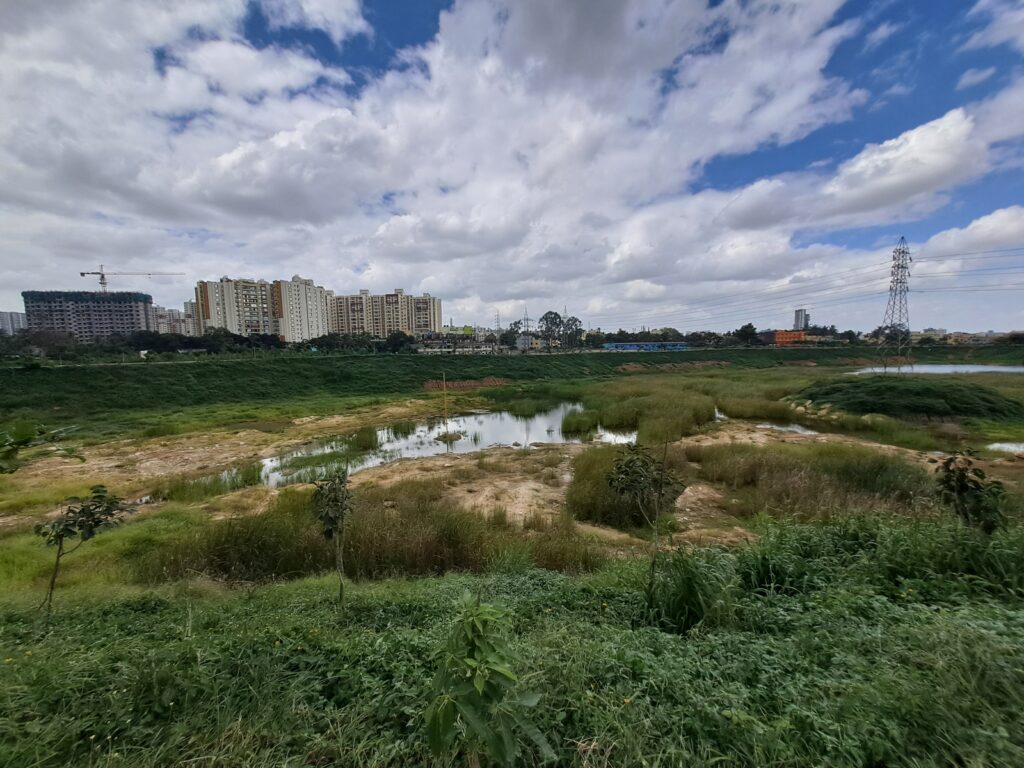
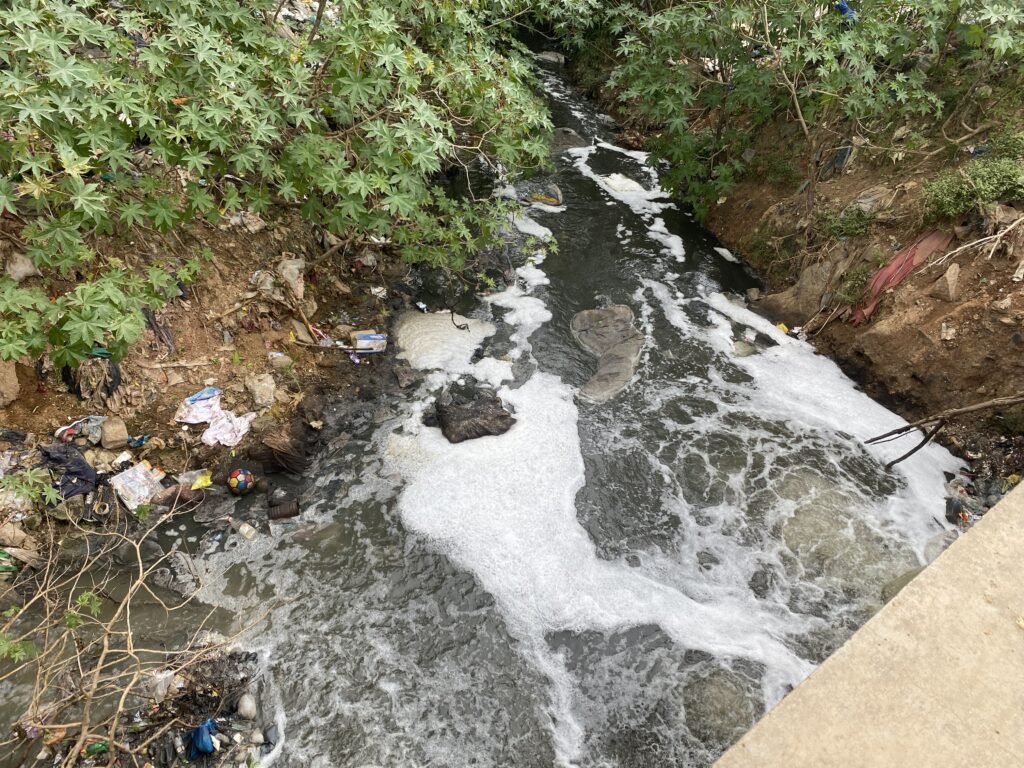


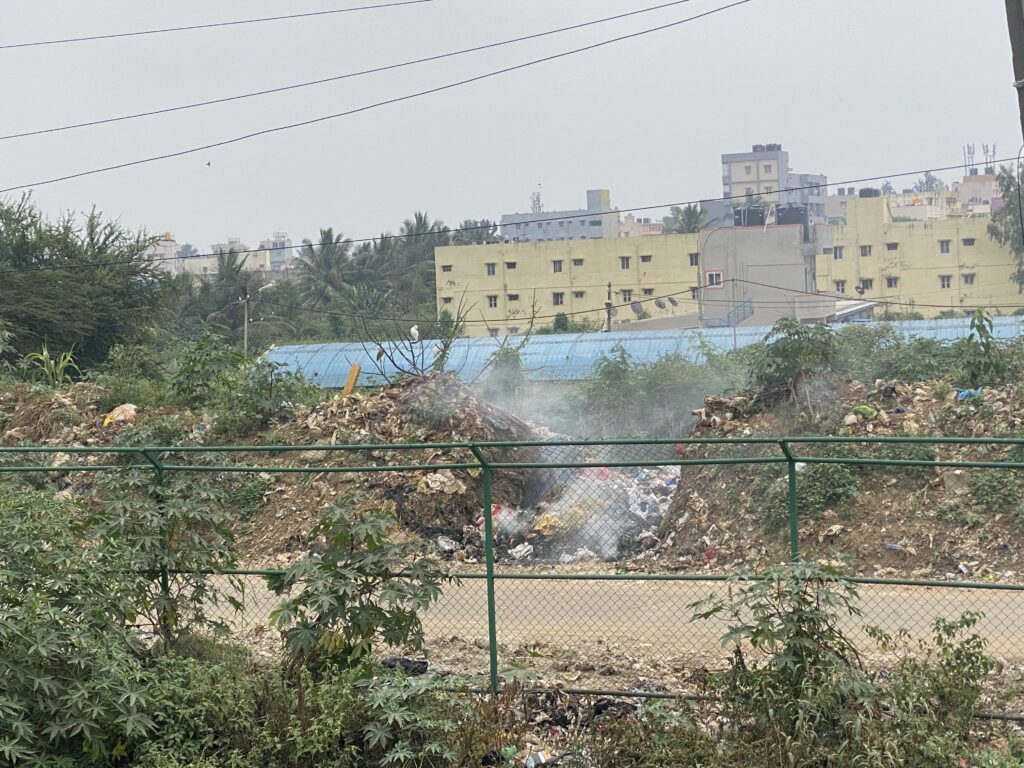
Common Challenges in Lake Restoration: A Call for Innovation
Restoring lakes in urbanized and industrialized regions like Bengaluru comes with a unique set of challenges. While initiatives have been undertaken to rejuvenate water bodies, it’s essential to critically evaluate whether the methods employed are truly effective or sustainable. Are traditional restoration methods reliable in addressing today’s challenges? Or do modern problems demand a blend of traditional wisdom and innovative techniques? This pivotal question underpins the ongoing discourse around urban lake restoration.
Flaws in Current Approaches and Potential Solutions
One of the most evident challenges is the incomplete execution of restoration techniques. The lagoons constructed to filter sewage water, for example, lack critical design elements. Without fixed flow rates or retention times, the filtration process becomes inconsistent, leading to stagnation, odor, and ineffective pollutant removal. Moreover, the absence of properly constructed lagoon basements allows sedimentation to alter depths over time, disrupting flow rates and even causing backflows, as seen in the recent case at Yarandahalli Lake. Here, excessive rainfall overwhelmed the inlet system, which failed to manage the inflow of water into the filtration lagoons. This resulted in a backflow of sewage water that entered nearby homes, highlighting the severe consequences of inadequate planning. 1
Another significant issue lies in the design philosophy currently adopted for lake rejuvenation, often referred to as the “soup bowl” model. In this approach, lakes are deepened to 25 feet or more, making them resemble wells rather than functional lakes. While such depths may increase storage capacity, they severely compromise the natural ecology of the lake, including habitat availability for aquatic flora and fauna. Additionally, steep edges make the lakes less accessible for recreational or community use and diminish their aesthetic appeal.
A potential solution to these issues could be stone pitching—a robust method that stabilizes lagoon bases, prevents sedimentation, and hinders excessive weed growth. Though it requires a higher initial investment, it ensures long-term stability and efficacy, making it a cost-effective choice in the long run. Furthermore, reconsidering the design framework to prioritize ecological balance and natural contours over excessive depth could foster healthier, more sustainable lakes that align with their original purpose as community water bodies.
Rain-Fed Dependency and Groundwater Depletion
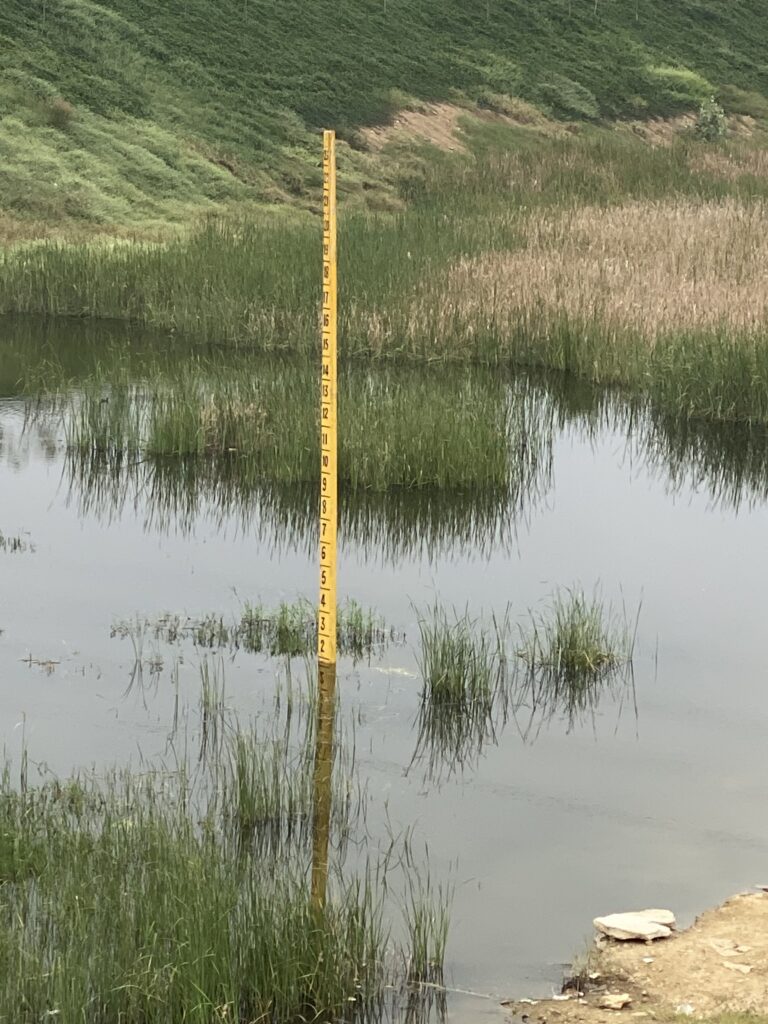
Another pressing concern is the reliance on rain-fed systems for increasing lake water levels. With rapid urbanization, the number of borewells tapping into the groundwater table has skyrocketed, leaving little opportunity for groundwater recharge. Moreover, as most of the inflow into the lakes is now being diverted elsewhere, the aquifer recharge relies solely on the limited rainwater collected in the main lake reservoirs. This inflow is often insufficient to sustain the groundwater table, creating a vicious cycle of depleting reserves and diminishing lake water levels.
A sustainable solution lies in integrating sewage treatment plants (STPs) at each lake. These STPs could employ biological treatment methods, such as using microbes or aquatic plants, to naturally and efficiently clean sewage water. The treated water could then be diverted back into the lake, not only replenishing its levels but also aiding in recharging the groundwater table.
The Role of Bioremediation and Maintenance
Bioremediation, a promising eco-friendly approach, has also suffered from inadequate follow-through. In these lakes, plants like Canna indica and others have been introduced to absorb pollutants. These plants play a vital role in remediation as they actively take up contaminants like nitrogen, phosphorus, and heavy metals through their roots, stems, and leaves. However, their effectiveness hinges on careful maintenance, particularly the periodic removal of the biomass they generate.
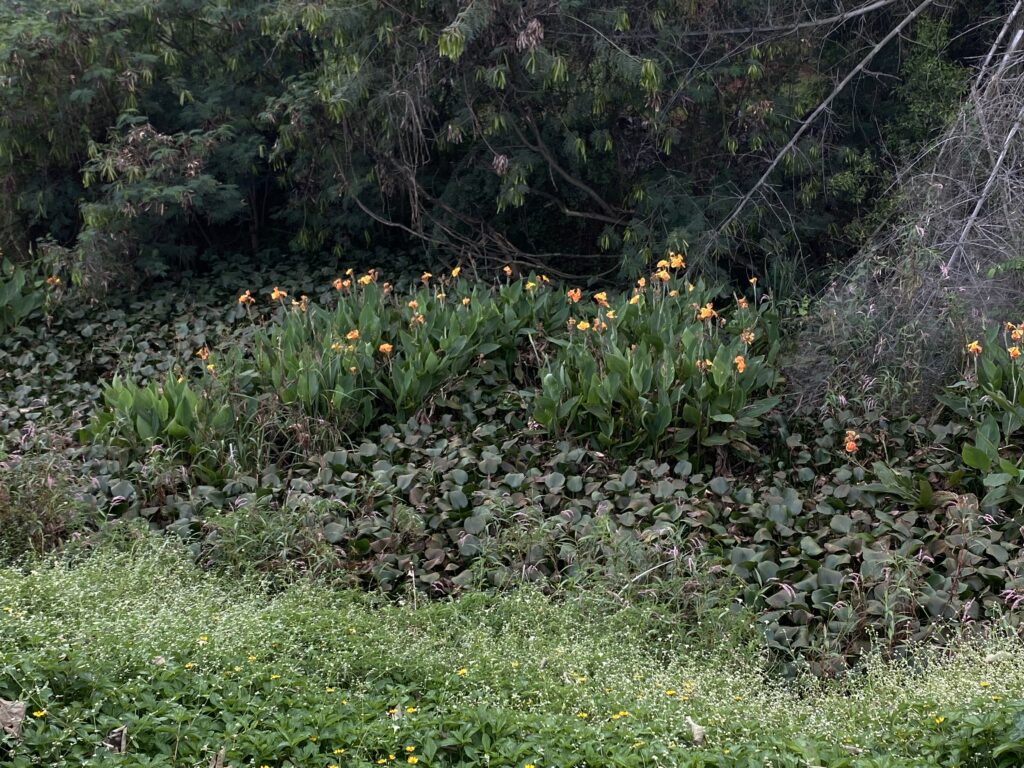
As the plants grow, they act as natural filters, locking harmful substances within their tissues. For example, phosphorus, a major pollutant contributing to eutrophication, accumulates in the plant biomass. If this biomass is left to decompose within the water body, the pollutants can re-enter the ecosystem, undoing the benefits of the bioremediation process. To prevent this, the harvested plant matter must be appropriately managed.
One innovative example of utilizing this biomass comes from projects where phosphorus-rich plants are processed to extract phosphorus for agricultural fertilizers. This not only recycles a valuable nutrient but also reduces the reliance on synthetic fertilizers. Similarly, in some regions, biomass from bioremediation projects has been converted into biochar, a carbon-rich material that can enhance soil health when used as an amendment.
Another example is the use of certain wetland plants like vetiver grass in construction applications. Vetiver grass, with its high tensile strength and ability to retain pollutants, has been repurposed into eco-friendly construction blocks or mats for erosion control. This approach offers a dual benefit: removing contaminants from water bodies while providing sustainable materials for other industries.
These examples demonstrate that bioremediation is not just about planting aquatic vegetation; it’s about integrating the process into a broader circular economy framework. Even the best bioremediation strategies will fall short if they lack consistent upkeep and innovative ways to handle the resulting biomass. Such a holistic approach underscores the need for long-term planning and a multidisciplinary perspective in lake restoration efforts.
Learning from Past Mistakes: The Chandapura and Dakshina Pinakini Cases
The dangers of neglecting effective sewage management are not hypothetical. In 2022, the Karnataka state government faced a ₹500 crore penalty imposed by the National Green Tribunal (NGT) due to industrial pollution and mismanagement at Chandapura Lake 2. Recently, in November 2024, a four-year-old case was reopened after frothing was reported in the Dakshina Pinakini River near the Karnataka-Tamil Nadu border.
This situation starkly illustrates the downstream impact of upstream negligence. The three lakes discussed in this blog—Shikaripalya, Margondanahalli, and Thirupalya Kere—are directly connected to this issue. Sewage from these lakes flows sequentially, passing through Muthanallur Kere as seen in the water flow diagram and eventually joining the Dakshina Pinakini River, similar to other lake networks originating from Anekal. These upstream contributions increase the pollution seen downstream in Tamil Nadu, including the frothing incidents at the Kelavarapalli Reservoir.
The question is: will we repeat history? The absence of a holistic sewage management system not only risks financial penalties but also perpetuates severe ecological damage. Without intervention, we risk leaving future generations to grapple with the compounded effects of our inaction.
The Way Forward: A Multidisciplinary Vision
Lake restoration cannot succeed as a one-dimensional effort. It requires a multidisciplinary approach that blends engineering, environmental science, community participation, and policy-making. The solutions must be innovative yet rooted in practicality, addressing not just the immediate problems but also the systemic issues that threaten these ecosystems.
One of the most crucial aspects of this vision is the integration of long-term maintenance into restoration strategies. Without consistent monitoring and upkeep, even the most well-executed restoration projects are at risk of reverting to their degraded state. Maintenance ensures that issues like invasive weed growth, pollution inflows, and structural deterioration are tackled promptly, preventing small problems from escalating into significant challenges.
Equally important is adopting a systems or watershed approach rather than treating or restoring lakes in isolation. Each lake is part of a broader hydrological network, and neglecting this interconnectedness can lead to downstream issues. The restoration plan must focus on an entire catchment area rather than the current approach which targets a single lake. A telling example is Hebbagodi Lake, where a metro yard was constructed in its atchkat area—the natural catchment that once allowed the lake to manage excess inflows. In years of heavy rainfall, this area becomes the first to flood when the lake overflows, creating challenges for both urban infrastructure and flood management. This underscores the need for comprehensive planning that considers upstream and downstream impacts, ensuring restoration efforts are holistic and effective.
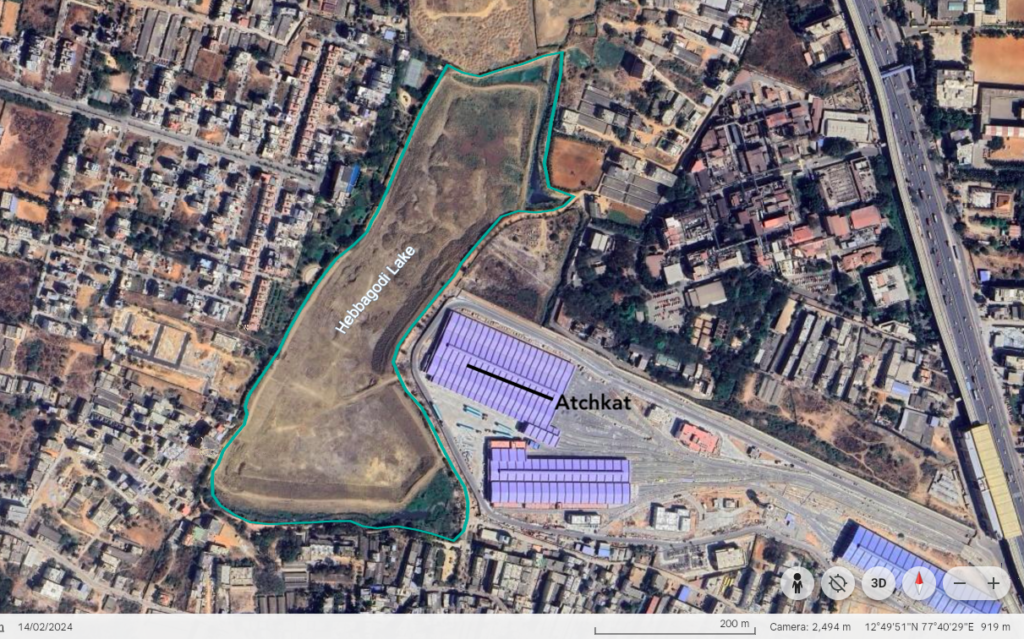
To implement this, a practical and sustainable model could involve employing local community members as lake stewards. For example, two dedicated individuals per lake could be hired to perform routine tasks such as de-weeding, observing water quality, collecting samples for periodic testing, and safeguarding the area from encroachments or misuse. These stewards could maintain detailed logs documenting the lake’s condition, changes in biodiversity, and water levels, creating a valuable dataset for ongoing analysis. This not only ensures regular care for the lake but also provides employment opportunities, fostering a sense of shared responsibility within the community.
Additionally, these efforts could be supported by technology, such as installing sensors to monitor water quality parameters like pH, turbidity, and dissolved oxygen levels in real-time. Regular community clean-up drives, coupled with educational programs about lake conservation, could further enhance public involvement. Policy-level support to establish these initiatives as part of urban planning and environmental governance is equally essential to ensure their sustainability.
Maintenance is not just about preserving the physical structure of a lake—it is a continuous process of safeguarding its ecological and social functions. By weaving maintenance into the fabric of restoration efforts and adopting a systems approach, we can create resilient ecosystems that stand the test of time. This ensures that lakes not only survive but also thrive amidst the pressures of urban growth, benefiting both nature and society for generations to come.
Conclusion: A Call for Sustained Action
Restoring a lake is not just a momentary achievement; it marks the beginning of a lifelong commitment—a commitment to safeguarding these vital ecosystems against the relentless pressures of urbanization and industrial growth. Restoration is a critical first step, but the true measure of success lies in the ongoing care, adaptive management, and collective responsibility that ensure these lakes remain functional and thriving over time.
As industries expand and urban areas continue to sprawl, the stress on our water bodies will only intensify. This makes it imperative for lake restoration approaches to evolve. Solutions must be both innovative and grounded, blending modern technology with the wisdom of traditional practices. They must prioritize environmental sustainability, embracing long-term goals over short-term fixes.
Beyond the techniques and policies, the heart of this mission lies in community engagement. Every individual has a role to play in preserving lakes—not just as ecological resources but as cultural and social cornerstones of our communities. Employing caretakers, encouraging citizen science, and fostering a sense of shared stewardship can transform these restoration projects into enduring success stories.
So, as you finish reading, I leave you with this question: What role will you take in ensuring that the lakes in your community are not only restored but nurtured to support life for generations to come?
These water bodies are not mere remnants of the past; they are lifelines for biodiversity, vital sources of groundwater recharge, and havens of natural beauty and peace. Saving them is not just a choice—it is an imperative, one that will define the health of our cities and the well-being of our future.
References and reading materials
- https://www.newindianexpress.com/cities/bengaluru/2024/Jun/07/bengaluru-faulty-lake-work-flooding-township-allege-residents ↩︎
- http://www.indiaenvironmentportal.org.in/files/file/Chandrapura-lake-report-NGT-Oct-2022.pdf ↩︎
- https://data.opencity.in/dataset/inventory-of-lakes-bengaluru-metropolitan-area/resource/inventorisation-of-water-bodies-in-anekal-taluk–vol-ii
- https://cdn.downtoearth.org.in/iep/Shikaripalya-lake-rejuvenation-report-NGT-Aug2022.pdf
- https://bangaloremirror.indiatimes.com/bangalore/cover-story/flow-profile/articleshow/106874824.cms#:~:text=The%20Shikaripalya%20waterbody%20was%20rejuvenated,passing%20through%20the%20filtration%20bunds.
- https://www.jsw.in/foundation/jsw-group-completes-ecological-restoration-margondanahalli-lake-bengaluru
- https://www.deccanherald.com/india/karnataka/bengaluru/restored-margondanahalli-lake-in-e-city-opens-to-public-1195730.html
- https://electroniccitycredence.in/restoring-thirupalya-lake-overcoming-challenges-for-a-sustainable-future/